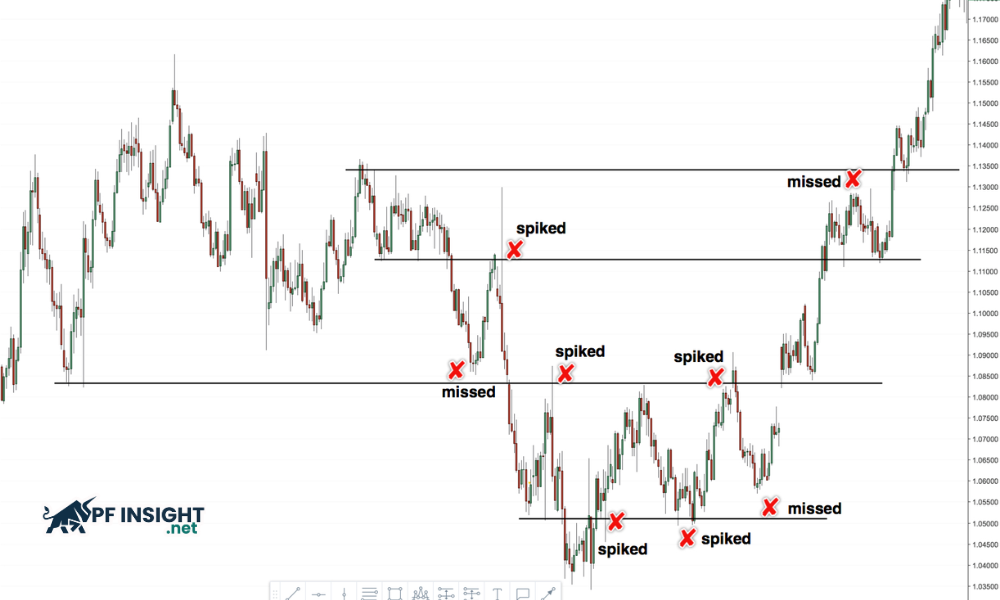Scalping is a trading method favored by many traders thanks to its ability to make quick profits. For those who want to overcome the Prop Firm challenge, mastering scalping can determine success. Today’s article by PF Insight will analyze scalping strategies for Prop Firm challenges in detail and share tips on how to effectively apply this strategy to optimize results in the proprietary trading challenge.
What is scalping?
Scalping is a strategy of taking advantage of small price movements to make profits. Traders typically make quick trades throughout the day, ranging from a few dozen to a few hundred orders, holding positions for seconds, minutes, or sometimes hours. The goal is to consistently make small profits that eventually lead to large profits.
Characteristics of scalping strategy:
- Continuous trading: Scalping traders execute orders continuously throughout the day, sometimes up to hundreds or even thousands of trades in the same session.
- Short-term positions: With the focus on making quick profits from small market movements, each order is usually held for only a few minutes.
- Modest Profits: Orders focus on small but consistent profits, which gradually increase total profits.
- Applying leverage: Scalping traders often use leverage to amplify profits from small price movements.
Technical analysis and real-time market data are key to successful scalping as they help determine the best times to enter and exit the market. Leverage is another popular tactic used by traders to increase profits, although it also carries higher risks. Because of these characteristics, scalping is the perfect tactic for fast and decisive trading situations.
The barriers of scalping in a Prop Firm environment

Prop firm trading firms provide capital to traders, but they must complete trading challenges with rules for withdrawals, profit targets, and execution times. When applied correctly, scalping strategies for Prop Firm challenges help maximize profits from small price movements and increase the chances of successfully completing the challenge.
Why scalping is the ideal strategy for the Prop Firm challenge:
- Quick profits: Scalping allows traders to profit instantly from small price movements due to its high frequency and continuous trading. This method helps to quickly reach profit targets and accumulate small profits into significant total profits in each trading session.
- Controlled risk: By setting stop losses, scalping helps traders limit losses and maintain withdrawal limits from proprietary trading firms. This is a scalping strategy for Prop Firm challenges, helping traders take advantage of quick profit opportunities from the market.
- Adaptability: Scalping helps traders react quickly to market fluctuations, adjust strategies promptly and effectively meet the requirements of the Prop Firm challenge.
Must-Know scalping strategies for Prop Firm challenges
Below are scalping strategies for Prop Firm challenges that traders can use to overcome the challenge effectively:
Momentum scalping

This is one of the scalping strategies for Prop Firm challenges, focusing on trading on clear momentum signals and short-term price movements. This method helps traders make quick decisions and maximize profits from small fluctuations in the market without missing out on profitable opportunities in short trading sessions.
How to do it: Traders apply technical analysis tools such as moving averages (MA) or RSI indicators to accurately determine entry and exit points.
Scalping EAs
The pre-programmed algorithms and instructions in automated trading platforms, often referred to as expert advisors, operate fully automatically, maximizing scalping efficiency and saving traders time by evaluating real-time market data, identifying trading opportunities, and executing orders without human intervention.
By executing trades in milliseconds, EAs allow traders to capture opportunities that manual trading might miss. By eliminating irrational choices, EAs ensure that trades are determined by pre-set algorithms and rules. EAs operate 24/7 and reliably execute orders, even when the trader is not actively monitoring the market. In short-term scalping sessions, this helps ensure adherence to the strategy, minimize risk, and increase profits.
How to do it: Use price action analysis in conjunction with technical indicators to develop clear criteria for entering and exiting trades.
- Entry conditions: When the price breaks above a certain moving average, the trader can open a buy position.
- Exit condition: When the price hits the pre-set stop loss or profit target, the trade will be closed to preserve the result.
Price action trading

This scalping strategies for Prop Firm challenges method focuses entirely on analyzing recent price movements, instead of relying heavily on technical indicators. This method helps traders practice making quick decisions, improve their ability to analyze the market, and is especially effective in a scalping environment with short-term price movements.
How to do it: Traders closely monitor important price zones (key support and resistance levels) and enter trades when prices move strongly at these levels, taking advantage of the opportunity to profit from rapid changes in the market.
Trend trading
This scalping strategy for Prop Firm challenges is based on observing temporary market patterns. By opening and adjusting positions in response to price fluctuations, traders improve accuracy and minimize risk. In short-term trading sessions, sticking to the current trend will maximize profit opportunities.
How to do it: Traders apply short-term trend lines combined with technical indicators such as MACD to identify market signals. Thanks to that, they can detect early trading opportunities in line with the trend and make effective entry or exit decisions.
Tips for Using scalping strategies for Prop Firm challenges
To effectively use scalping strategies for Prop Firm challenges, traders need to keep in mind the following factors when participating in proprietary trading:

- Know the rules: Traders need to understand the specific requirements of the proprietary trading challenge, such as the allowed trading hours, the types of financial instruments that can be used, and the withdrawal limits. Strictly following these rules will not only help avoid violations, but also increase the chances of passing the challenge effectively.
- Start with small positions: You should start with small positions to gradually get used to the market conditions as well as how the trading platform provided by the brokerage firm works. This cautious approach helps to use scalping strategies for Prop Firm challenges effectively, limit losses when the market fluctuates unexpectedly and gradually accumulate practical experience to adjust the trading strategy accordingly.
- Always follow the principle: Traders should always stick to their trading plan and limit opening too many orders. Scalping requires high concentration and can easily cause stress, so discipline is the key to minimizing risks and avoiding unnecessary losses.
- Practice with a demo account: To use scalping strategies for Prop Firm challenges, you should test the strategy on a demo account before applying it to real trading. This helps you fine-tune your skills, practice your reflexes in different situations, and increase your confidence before trading with real capital.
- Pay attention to high market liquidity periods: Trade during active market periods, such as when the London or New York session opens, to take advantage of high liquidity and volatility, thereby increasing your chances of making a profit.
- Choose a reputable broker or platform: Make sure that the proprietary trading firm’s platform has fast order execution capabilities and offers low spreads, as these are two key factors that determine the effectiveness of a speculative strategy.
Common mistakes when trading scalping trading
Many new traders using scalping strategies for Prop Firm challenges are easily influenced by emotions, leading to hasty decisions. Here are some common mistakes that traders should avoid when scalping:

- Trading without a specific stop loss: Trading without a clear stop loss is a serious mistake that many traders, especially newbies, often make. Lack of a stop loss means that you have no way to protect your capital when the market goes against your prediction. Even a small fluctuation can cause a big loss. Therefore, you should always set a specific stop loss to effectively manage your risk.
- Ignoring the impact of spreads and transaction costs: Ignoring the impact of spreads and fees is a common mistake in scalping. Since scalpers typically aim for small profits per trade, spreads and transaction fees can significantly eat into profits. Without careful planning, traders can end up with a situation where the more they trade, the less profit they actually make.
- Emotional trading: Letting emotions influence your trading decisions reduces objectivity and discipline. When you are caught up in fear or greed, you can easily enter trades too quickly, exit too early, or hold trades for too long, leading to unnecessary losses.
- Overtrading: Overtrading is one of the common mistakes when applying scalping strategies for Prop Firm challenges. When you execute too many orders in a short period of time, you easily lose control, leading to increased transaction costs and decreased performance. In addition, overtrading also increases psychological stress, which can easily lead to mistakes and losses.
Conclude
Scalping strategies for Prop Firm challenges offer traders the opportunity to capitalize on short-term volatility to achieve quick profits. However, to be successful, you need to maintain discipline, manage risk carefully, and understand the rules of the funding company. By combining a sound strategy with patience and constant practice, scalping can become a powerful tool to help you conquer the challenge.







